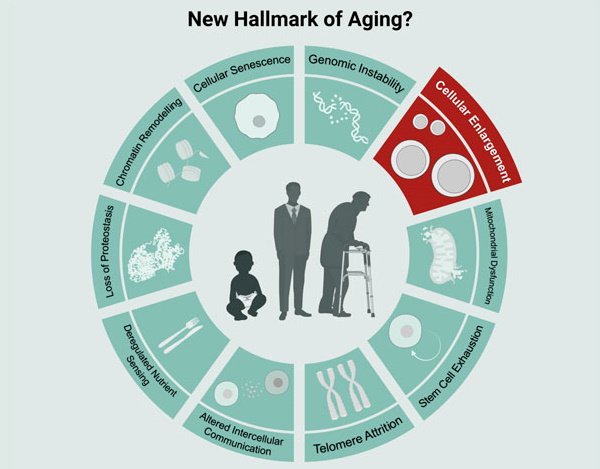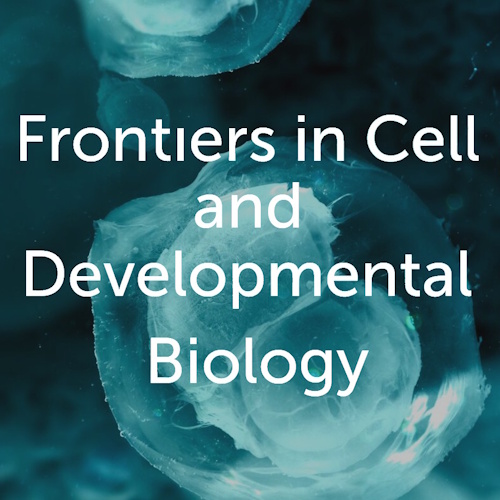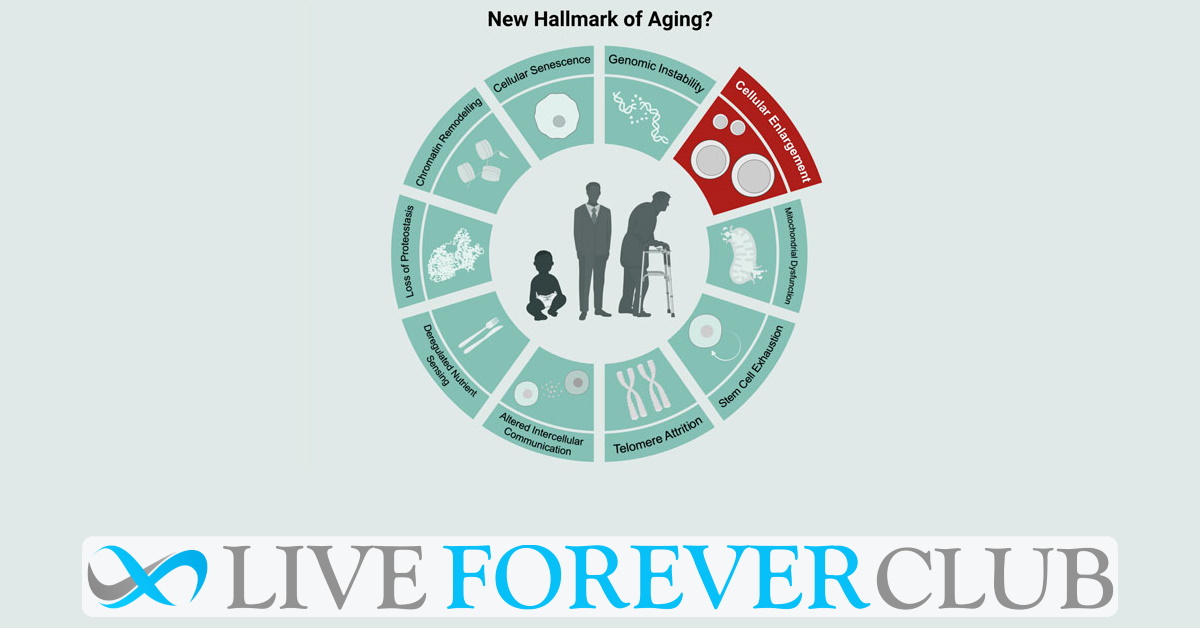Aging and its causes have been explored for a long time, in the quest to understand it and cure it. Our current understanding of aging divides the process into 9 categories which are known as the Hallmarks of Aging:
- 1) Cellular senescence
- 2) Mitochondrial dysfunction
- 3) Stem cell exhaustion
- 4) Telomere attrition
- 5) Altered intercellular communication
- 6) Deregulated nutrient sensing
- 7) Loss of proteostasis
- 8) Chromatin remodeling
- 9) Genomic instability
These processes work in tandem to manifest as aging. As these factors accumulate, they accelerate the process of aging and removal of these factors slows down the aging phenomenon.
Not on this list, but has been known for some time now, is that as cells age they start growing in size. This has been observed both in live bodies as well as synthetic mediums. New insights nudge us to look at cellular enlargement from the prism of aging.

Cellular enlargement and aging
Different types of cells have their own unique average cell sizes, and the cells utilise energy to maintain a uniform size by different pathways. It has been seen in various observations of cells (including budding yeast cells and human cells) that suppressing their size enlargement by drugs maintains their ability to multiply through cell division and delays senescence.
A recent experiment with hematopoietic stem cells (these are multipotent primitive cells that can develop into all types of blood cells) was done to identify if cell size change and ageing are causal and not just correlated. There was a strong case to be made that cell size-increase leads to cellular dysfunction and ageing. It is observed that normal functioning of hematopoietic stem cells (HSC) is dependent on their maintaining small size. As they grow older, HSCs also start growing bigger. HSCs stop cell cycle and division due to factors like DNA damage, which leads to their enlargement, and enlarged cells end up becoming dysfunctional.
Intersections between cellular enlargement and other hallmarks of aging
As cellular enlargement as a causal factor for aging is explored, there are potential connections with other hallmarks of aging which are worth examining.
Cellular senescence
Old cells stop their cell cycles (irreversibly) and grow larger. Enlarged HSCs are more likely to get arrested cell cycle and progress into senescence on being subject to further stresses.
Telomere shortening and DNA damage
Telomere shortening and accumulated DNA damage lead to ageing. DNA damage leads to arrest of cell replication as the cell tries to repair the damage. However, cell growth doesn’t stop during this repair process. This leads to increased cell size which may eventually cause cellular dysfunction. However, cellular enlargement in cells with telomere shortening and DNA damage may be protective in the sense that loss of functionality in these enlarged cells prevents replication of damaged DNA.
Mitochondria and cell enlargement
As cells grow and divide during normal cell cycles, their mitochondria also grow in volume and function. However, as the cells start aging, this favourable increase in mitochondria function gets decoupled from cell size.
Cell size and aging related changes: Exploration of old studies
As cell enlargement has been observed with senescence for a while, a lot of research has gone into observing this. But cell enlargement was not considered a hallmark of aging. This gives fresh perspective to these older observations.
Red blood cell size
Red blood cell size is significant for detecting and studying various pathologies of blood. An enlargement in red blood cell size with associated volume increase is associated with progressive age and various diseases like anaemia, autoimmune diseases, cancer types, and cardio- and cerebrovascular diseases.
Cell size of adipocytes
Adipocytes are fat storing cells of the body. As the cells grow in size, there is an increasing risk of type 2 diabetes. Conversely, shrinkage of adipose cells in late ages is associated with reduced organ function with age due to reduced fat depot size.
Alzheimer’s disease and brain cell size
Usually, brain cells shrink with age. But there are some specific areas of brain which show cell enlargement. These areas are more prone to changes that lead to development of Alzheimer’s disease.
Cardiomyocyte hypertrophy
Cardiomyocyte or heart cells grow both due to physiological and pathological reasons. Physiologically, these cells grow from oxidative stress such as exercise. There is a distinct difference between the two growths. Pathological growth may cause genomic defect which accumulate causing complications later. This is not observed in physiological hypertrophy.
Cell size and lifespan
There are some fascinating studies involving various mammalian cells which indicate that smaller cell sizes lead to longer lifespan. There are obviously several exceptions to this observation, and it cannot be generalised.
Author: Joydev Bhattacharjee
Reference
Cellular enlargement – A new hallmark of aging? – Jette Lengefeld et al (University of Helsinki) – Frontiers in Cell and Developmental Biology – DOI: 10.3389/fcell.2022.1036602






